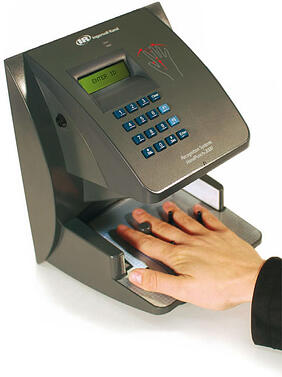From an organizational standpoint, the benefits of biometric devices are well documented. Greater control over the workforce, increases in productivity, and better labour management are just a handful of the commonly known advantages of such equipment. But prior to investing in a biometric time clock for your organization, a simple question needs to be asked: is a biometric time clock right for my business?
over the workforce, increases in productivity, and better labour management are just a handful of the commonly known advantages of such equipment. But prior to investing in a biometric time clock for your organization, a simple question needs to be asked: is a biometric time clock right for my business?
- In particular, you have to determine the benefit cost ratio. Will the investment elicit the desired return?
- Will the equipment help reduce inefficiencies at their point of origin?
The following are some questions to consider to determine if they are the proper labour management solution.
Are my labour costs higher than they should be?
- Employees are a company’s largest asset. Consequently, businesses generally put a significant amount of time and money into their labor force. In many cases, labour is among the highest expenses that companies face. That said, if labour costs are becoming exorbitant, this may indicate that there are inefficiencies in labour management that need to be addressed.
Are manual time and attendance processes proving inadequate?
- As already mentioned, labour costs are a significant business expense to begin with. When you couple this with the fact that many organizations still use inefficient time and attendance systems, it’s clear that there are ways to drive down costs in this area. Common issues that arise from manual processes include: buddy punching, inaccurate time tracking, unauthorized absences, and poor time allocation. With biometric time clocks, your organization can automate time and attendance processes, which helps to eliminate many of these costly inefficiencies.
Are excessive overtime and unbalanced workloads proving problematic?
- One of the most common problems faced by businesses is the amount of overtime employees are taking. Often, unauthorized overtime and unbalanced workloads result in the overpayment of employees, which can cause a decline in a company’s bottom line.
Are there consistently issues with compensation?
- On the opposite end of the spectrum, manual time and attendance processes can result in underpayment of employee wages, which is turn can lead to increased employee dissatisfaction and a decline in productivity. Furthermore, trying to determine if claims of underpayment are in fact accurate requires time and manpower that could be better allocated elsewhere. Inaccuracies can also result in noncompliance issues, which can severely impact your business negatively. Biometric time clocks help to eliminate such inaccuracies by improving time and attendance management, so that you ensure employees are compensated correctly every time with no room for disputes.
If you find that you are answering “yes” to the above questions, then biometric time clocks may be the solution. Ultimately, they will help your organization save time and money on your payroll costs.
